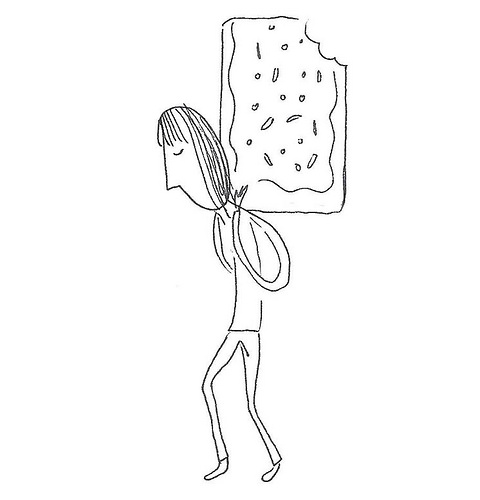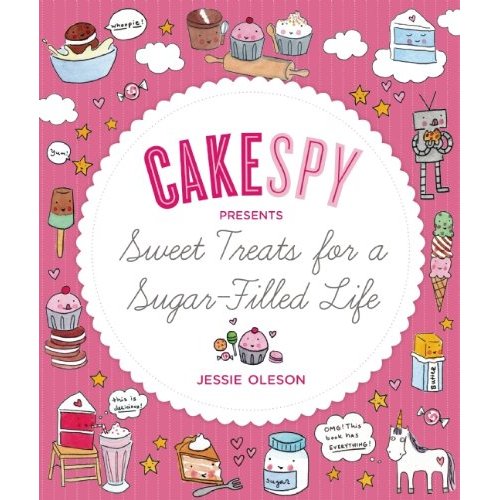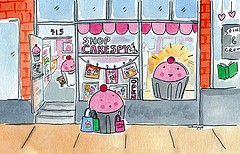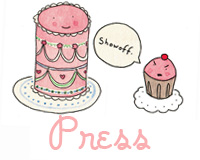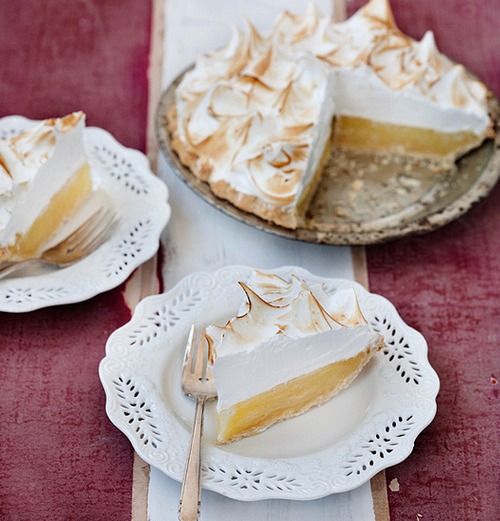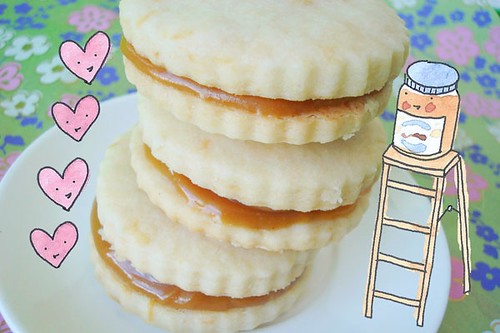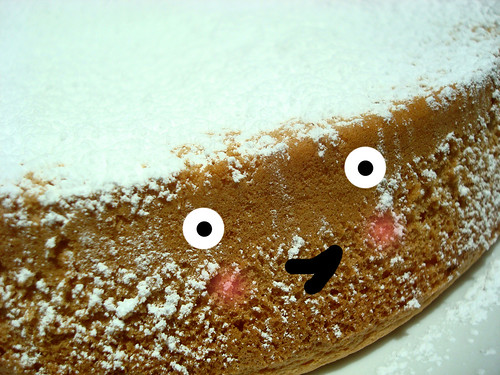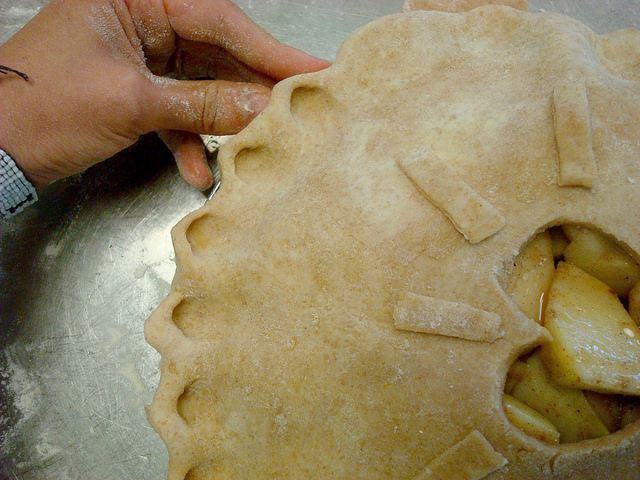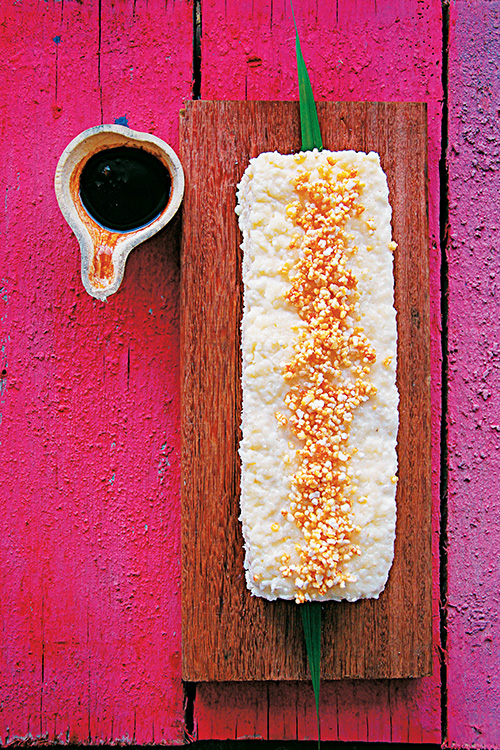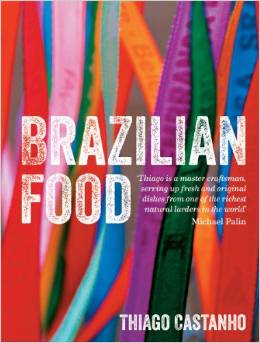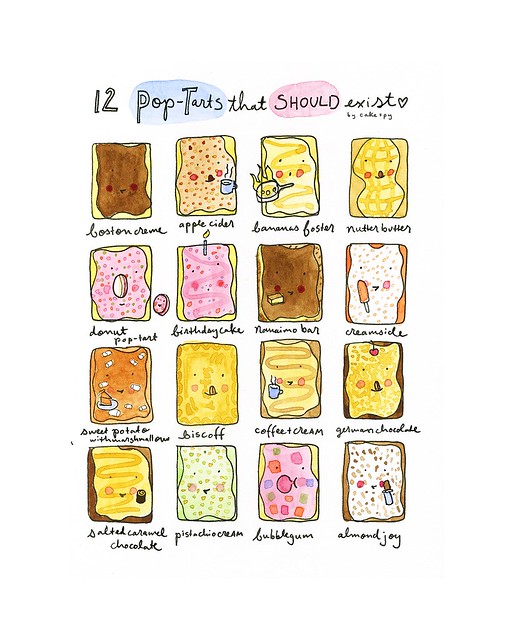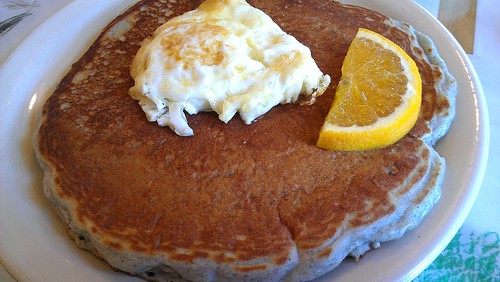What is Cornstarch and What Does it Do?
 Saturday, November 29, 2014
Saturday, November 29, 2014 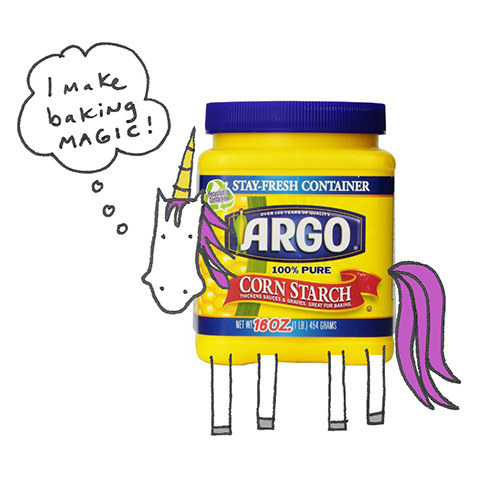 I'll just get right into it: what is cornstarch and what does it do?
I'll just get right into it: what is cornstarch and what does it do?
This question came up when I was chatting with a gluten-free friend who said she'd recently made a GF brownie mix that called for 1/2 cup of added cornstarch in the event of high altitude baking. Well, that's odd, I thought. I wonder why? That seemed like a lot of cornstarch to me. Maybe there are some things I don't know about cornstarch?
And so I figured, for my reference and yours, I'd come up with a roundup of what cornstarch is, what it does, and how to use it in your baking. Ready? Set? Let's go.
Cornstarch: what is it?
The short version? Cornstarch is derived from the endosperm (tee hee) of corn kernels, which is ground into a find powder. It's used primarily as a thickener and binder both in savory and sweet cooking and baking.
Cornstarch: how is it made?
The long version? It's sort of confusing, but here's what I gleaned from the International Starch (really) page. First, corn is steeped in hot water for up to 48 hours. The germ is then separated from the endosperm, and still steeping, they are both, respectively, ground. Starch is separated from the steeping liquid, the remaining cereal germ, and corn gluten--mainly in centrifuges and hydrocyclones (a cyclone-shaped device). The starch is then modified by applying different reaction conditions - temperature, pH, additives. This process creates the corn starch with unique and reliable properties we use for our culinary projects.
Key roles cornstarch plays in baking
Cornstarch as a thickening agent
Cornstarch can be added as a thickener to a variety of mixtures, from gravy to pie fillings to custards or cake fillings. It has more power, ounce for ounce, than flour, which is also used for this purpose; increasingly, the fact that it is also gluten-free is attractive to bakers, enabling them to make gluten-free pie fillings and custards.
Here's what happens when cornstarch is added to the mix: heat causes the starch to bind with molecules of water, and the starch begins to swell as it absorb the liquid. When the mixture comes to 203 degrees F, the starch will have expanded to about 10 times its size while still in powder form. However, this expanding is finite. You can bring cornstarch-enriched sauces or mixtures close to a boil, but don't let them fully boil and don't stir too vigorously. The starch will start to deflate, erasing the entire purpose of adding it to your mixture.
The cornstarch will not only become thicker in heat, but as it cools, it will set, so it's a great way to further solidify desserts tending toward gooey such as the filling of Lemon meringue pie, without the cloudy color that flour might impart.
There are considerations for using cornstarch as a thickener. According to this website,
- If you add cornstarch directly to a liquid, it can get clumpy, especially if added to a hot mixture. First, make a slurry of equal parts cornstarch and a cold liquid. Add this liquid paste to the mixture you want to thicken for better results.
- Cornstarch doesn't react well with acidic ingredients. Tapioca starch or arrowroot will work better for thickening acidic mixtures.
- Cornstarch imparts a glossy, translucent sheen to the mixtures it thickens, so it tends to be used more in sweets rather than savory sauces.
Cornstarch in cookies and cakes
Cornstarch not only thicken sauces and mixtures, but it can be used in baked goods such as cookies or cakes, too. It is said that cornstarch used in combination with flour can "soften" the harsh proteins of flour, making a more tender baked good. Anecdotally, I can tell you this is true. A recipe such as shortbread which employs part flour and part cornstarch yields a cookie with the perfect crumb: crumbly, but not fall-apart. Tender and delicate, but in a way that the cookie still holds its shape.
As I learned on a King Arthur Flour forum, it is also one of the secrets of cake flour.
Cake flour has been treated with chlorine gas which acts not only as a whitening agent, but also has a maturing effect on the flour. It damages the proteins that form gluten so that these will not form the long stiff chains and networks that make good bread, but also breaks down starches so that these will absorb more water. These hydrated starches then "gel" during baking to provide an alternate structure (alternate to gluten formation) which is desirable for cakes; tight, even crumb, moist, very tender.
You can make your own cake flour substitute, by the way. All you have to do is add two tablespoons of cornstarch per cup of all-purpose flour for a recipe. While it won't yield exactly the same results, it will certainly yield a more delicate baked good than all purpose flour alone.
Cornstarch as an anti-caking agent
The difference between confectioners' sugar and granulated sugar? Primarily texture--confectioners' sugar has been finely ground (and you can make your own, at home, btw!)--but it's also the fact that confectioners' sugar is mixed with a small amount of cornstarch. The starch acts as an anti-caking agent by keeping moisture and condensation from forming the sugar granules into lumps.
Cornstarch isn't just used to discourage moisture from ruining your sugar. If you buy shredded cheese in the supermarket, chances are it has cornstarch in the mix--this keeps the moisture and condensation from making your cheese slimy. However, with cheese, there is a caution involved. The starch can turn brown quicker than the cheese in heat, so it can give a false indication of doneness.
Frequently asked questions
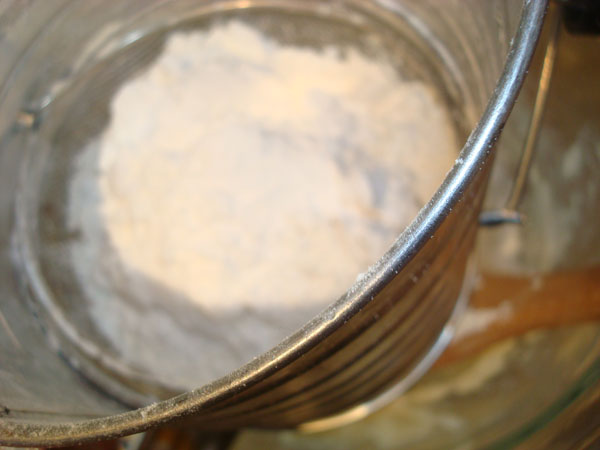
Still curious about cornstarch? Here are some answers to commonly asked questions.
Why is cornstarch used so often in gluten-free baking?
Probably first and foremost because it's naturally gluten-free. Both cornstarch and flour are considered "cereal starches"--but the main difference is the aforementioned gluten. Flour has it; cornstarch does not. But, you know, it also adds structure to baked goods, and this can be helpful when they lack the "glue" of gluten.
Is it possible I know this stuff by a different name?
I've seen it as "corn starch" and "cornstarch"--I prefer the one-word variation. You'll see it referred to as such in US and Canada; in other countries, it may be called "cornflour"--not to be confused with cornmeal.
My cornstarch got all clumpy in my pie filling. What's up?
Nobody likes clumps and lumps in what should be a smooth pie filling. To avoid lumps, make a slurry (equal parts cold liquid and cornstarch) before incorporating the starch into the pie filling mixture.
I'm sure I did everything right, but the starch didn't thicken my mixture.
Check the expiration date. Cornstarch does not last forever, and an advanced age can very much affect its thickening abilities.
Other possible causes: the mixture got too hot and the starch broke down; you overstirred and the starch broke down.
Help! My pie filling began "weeping". Is the cornstarch to blame?
Cornstarch can thin as it stands. The technical term is "syneresis", and it is characterized by a liquid "weeping" from the filling. It tends to happen more with mixtures including eggs or a lot of sugar. One of the culprits can be overstirring--this can break up the starch and make it thin out. Be sure to follow the instructions on your recipe to ensure that you are following the specified guidelines for how to treat the cornstarch mixture.
Don't have cornstarch?
Here is a list of some substitutes you can use in baking.
Can I use cornstarch instead of flour?
Go ahead and give it a try. Cornstarch has twice the "thickening" power of flour, so you won't need as much. This helpful table will assist in substitution amounts.
Recipes with cornstarch
- Lemon meringue pie in a chocolate crust (CakeSpy)
- Chocolate chip cookies (Sally's Baking Addiction)
- Shortbread (CakeSpy for Craftsy)
- Alfajores (CakeSpy)
- Marquesote (CakeSpy)
What's your favorite recipe containing cornstarch?
 cornstarch,
cornstarch,  stories
stories 









